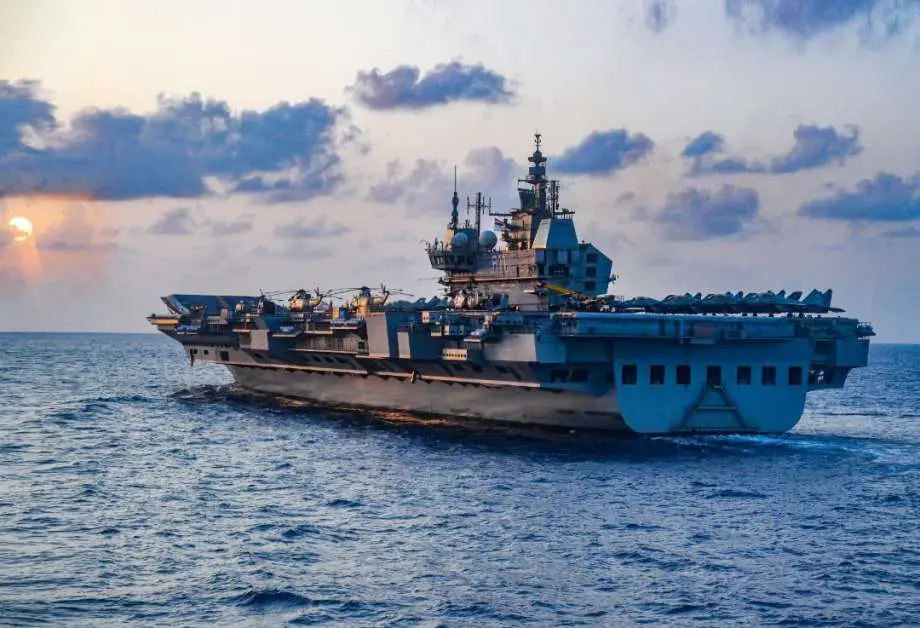According to information published by the Times of India on September 27, 2023, the Indian Navy has formally proposed the construction of a second indigenous aircraft carrier to the government. This vessel, estimated to cost over Rs 40,000 crore, is set to be built at Cochin Shipyard (CSL).
Follow Navy Recognition on Google News at this link
 Indian Navy's first indigenous aircraft carrier INS Vikrant. (Picture source: Indian MoD)
Indian Navy's first indigenous aircraft carrier INS Vikrant. (Picture source: Indian MoD)
Aircraft carriers, being sophisticated naval assets, demand regular maintenance and refits, often rendering them non-operational for extended periods. Having only two carriers means that when one undergoes maintenance, the operational strain on the other increases, potentially diminishing its lifecycle and combat efficiency. A third carrier would effectively distribute this operational load, ensuring that the Navy always has substantial aerial and maritime coverage.
Moreover, with the growing significance of the Indo-Pacific region and increasing naval activities, the ability to project air power with multiple carriers allows for greater tactical flexibility. More carriers mean more aircraft, translating to a wider range of air missions, from combat sorties to reconnaissance.
A third carrier would also provide the Indian Navy with additional deck space, enhancing its capacity to accommodate future advancements in aviation technology and potentially more significant aircraft.
In terms of fleet operations, a third carrier offers a tactical advantage by enabling the Navy to engage in simultaneous multi-theatre operations. This not only extends its blue-water naval capabilities but also ensures quicker response times to emerging threats or challenges across its vast maritime domain.
Furthermore, aircraft carriers play a crucial role in Humanitarian Assistance and Disaster Relief (HADR) operations due to their ability to carry helicopters and necessary equipment. Having three carriers ensures that the Navy can maintain its defense commitments while also addressing regional humanitarian crises.
From an economic perspective, the maritime routes in the Indian Ocean are crucial global trade arteries. Their safety and security have broad economic implications.
A third aircraft carrier would amplify the Navy's patrolling capacity, offering enhanced protection to commercial vessels, deterring piracy, and ensuring the unobstructed flow of trade.



